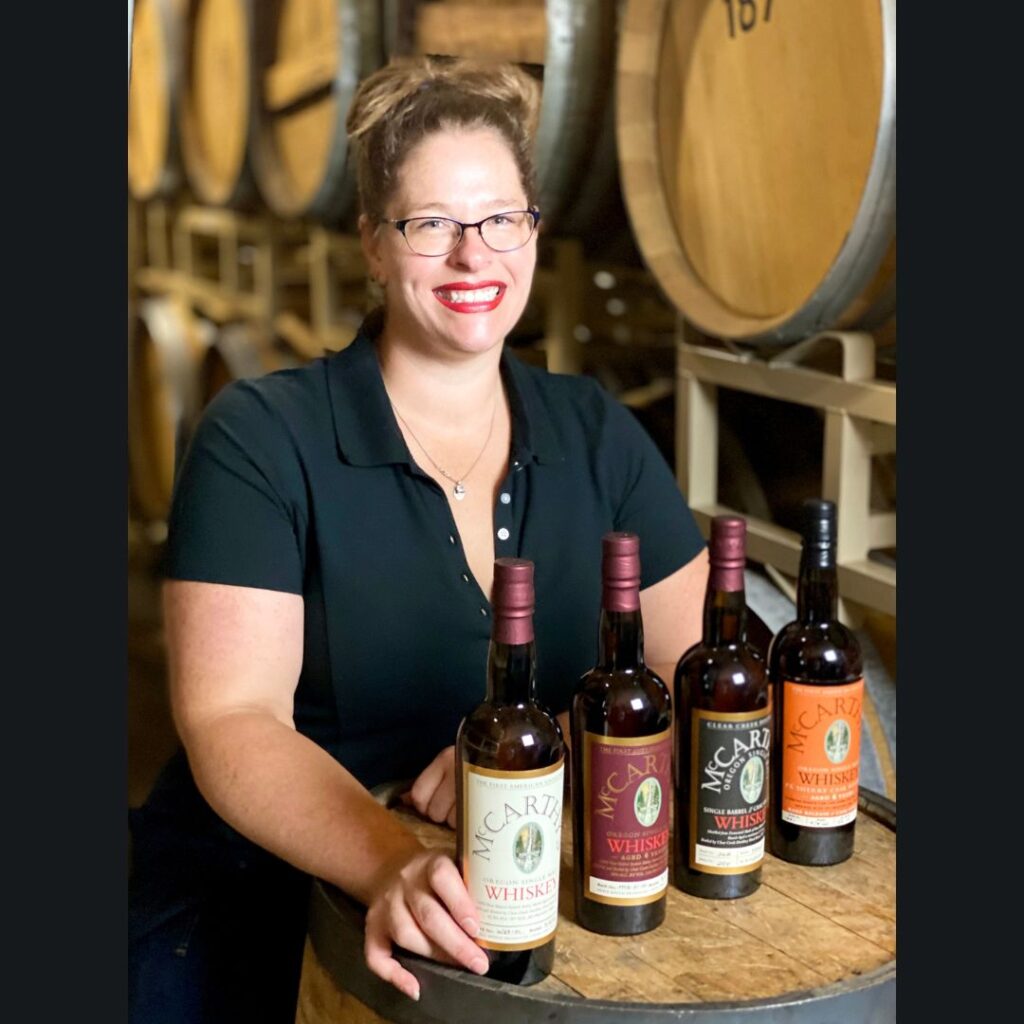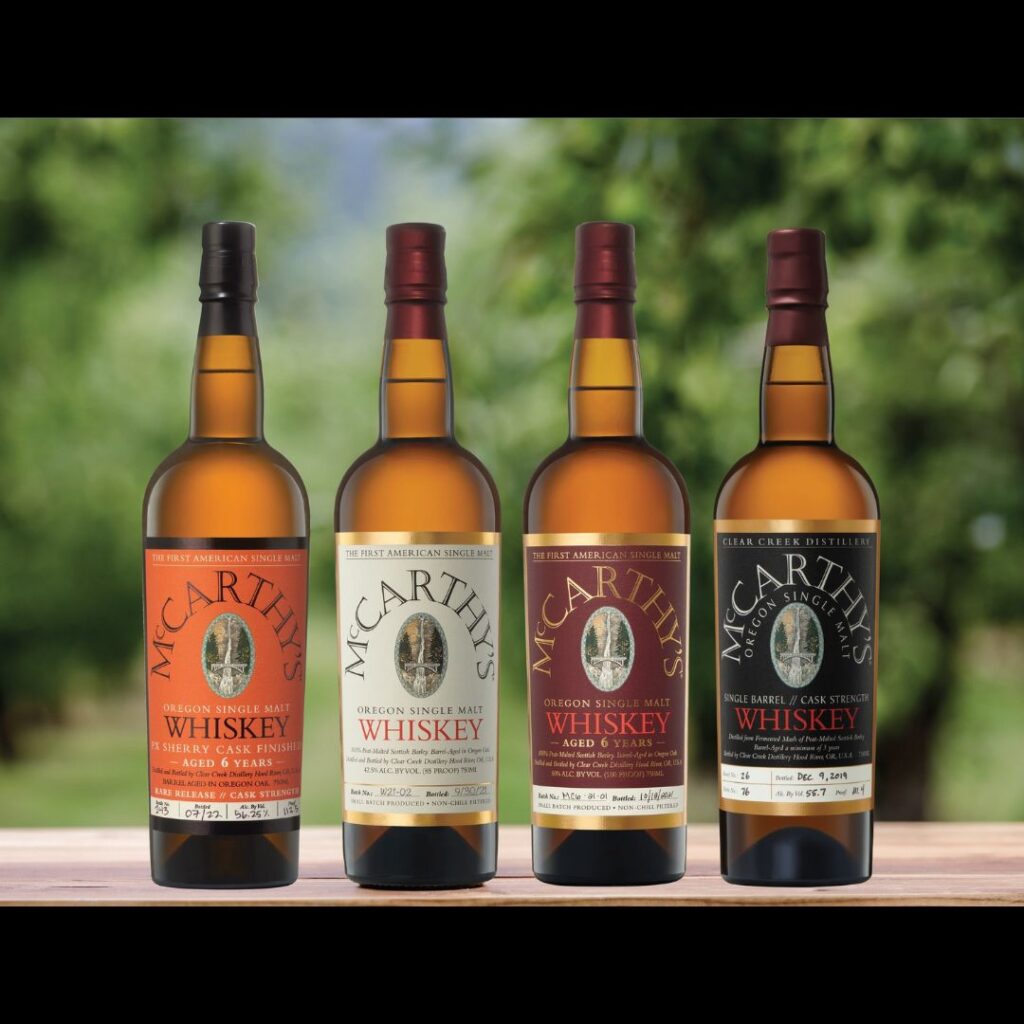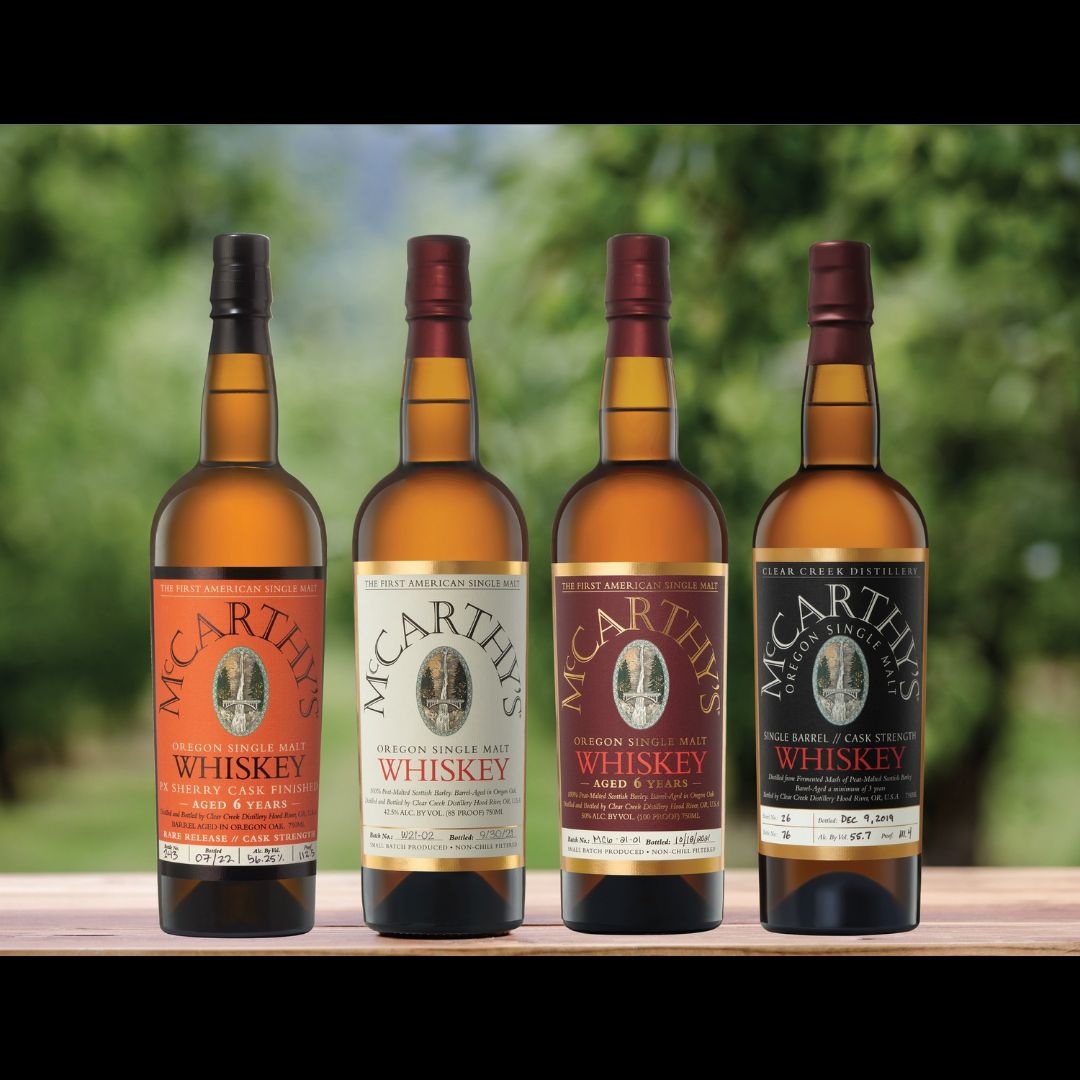In the world of American whiskey, McCarthy’s Oregon Single Malt holds a distinguished place as the pioneer of the American Single Malt category. First distilled over three decades ago, this remarkable spirit was the brainchild of Steve McCarthy, a visionary who drew inspiration from the peated single malts of Islay.
Today, McCarthy’s is a flagship brand of Hood River Distillers, Oregon’s largest and oldest distillery.
As the American Single Malt category gains official recognition, the industry is seeing a new wave of innovation and craftsmanship. Women are playing an essential role in this evolution, and one of the leading voices in this movement today is Caitlin Bartlemay, Master Distiller at Hood River Distillers. Bartlemay’s journey into distillation was deeply rooted in her upbringing. The native of Eastern Oregon grew up on a wheat ranch, where she developed an early appreciation for fermentation science. Inspired by her father’s winemaking,
Bartlemay pursued a degree in Food Science and Technology from Oregon State University, which set her on a path to becoming one of the leading voices in American whiskey. Since joining Clear Creek Distillery (part of the Hood River Distillers family) in 2010, Bartlemay has risen through the ranks, now overseeing the production of over 20 distinct spirits, including McCarthy’s.

The Grain-to-Glass Process: A Nod to Tradition with a Distinctive Oregon Twist
McCarthy’s Oregon Single Malt Whiskey begins with a key ingredient: 100% peat-malted barley imported from Scotland. While Oregon has both peat and barley, sourcing the malt from Scotland was the only viable option when the whiskey was first created in the early 1990s. Over time, this decision has become integral to McCarthy’s identity.
“Thirty-one years later, that grain is the flavor of McCarthy’s,” Bartlemay explains.
Despite its Scottish roots, the production process reflects a distinctively American approach. McCarthy’s partners with Double Mountain Brewery in Hood River, Oregon, which mills the barley, produces a clear wort, and ferments it before distillation. The fermentation process, which occurs at slightly warmer temperatures than traditional Scotch methods, develops signature fruity and floral notes that set McCarthy’s apart.

Distillation: Breaking the Rules for a Softer Smoke
While McCarthy’s owes its inspiration to Islay single malts, it takes a unique approach to distillation. Unlike the double or triple distillation common in Scotch whisky, McCarthy’s is distilled just once in hybrid pot stills designed for fruit brandy production. These 100% copper stills allow for exceptionally tight cuts, resulting in a softer, more nuanced smoke profile that lets the underlying malt shine. “This leads to a subtle peat expression, which allows the fruity and floral notes from the grain itself to come through,” Bartlemay said.
Barrel Aging: Harnessing the Power of Oregon Oak
McCarthy’s whiskey is aged in a combination of new and used Oregon oak casks with a medium toast. The choice of Oregon oak is intentional, giving the whiskey a true sense of place. Similar in structure to French oak, Oregon oak offers deep flavor extraction without the need for heavy charring. The result is a bold, complex whiskey that balances the oiliness of the spirit with the rich tannins of the wood.
Aging takes place in an unregulated warehouse, where seasonal fluctuations in temperature and humidity create a slow, steady maturation process. “The barrels act like lungs,” Bartlemay said. “They draw the spirit in and out of the wood grain, allowing for methodic extraction, oxidation, and concentration through the angel’s share.”

A Range of Expressions and Sherry Cask Finishes
McCarthy’s is available in several expressions: a three-year-old bottled at 85 proof, a six-year-old at 100 proof, and two sherry cask-finished versions of the six-year—one aged in Oloroso casks and the other in Pedro Ximénez casks. The goal of these finishes isn’t to mask the whiskey’s character, but to enhance and highlight its existing flavors. “We listen to the whiskey as it finishes,” Bartlemay said. “At the end of the day, the finishes are our way to highlight things within the whiskey that we love and make them more accessible to consumers.”
Bottling Proof: A Balance Between Versatility and Purity
The varying proofs across McCarthy’s lineup reflect a thoughtful approach to consumer experience. The three-year is bottled at 85 proof, making it versatile for both sipping and cocktails. The six-year is proofed to highlight its best characteristics when enjoyed neat. Meanwhile, the sherry cask-finished expressions are bottled at cask strength, allowing whiskey lovers to dilute to their preference. “Maybe they just need a drop or two of water, or maybe a large rock that sits over the length of a conversation with friends,” Bartlemay suggests. “McCarthy’s is a bold and delicious whiskey, perfect for contemplation or as a frame for celebrating the rituals of humanity.”
Looking Ahead: Innovation in the Works
While McCarthy’s already holds an iconic place in American whiskey history, Bartlemay and her team continue to push boundaries. Although she keeps details under wraps, she teases that exciting innovations are in the works. “We always have a few experiments going,” she said. “Rest assured, the team at McCarthy’s isn’t resting on their laurels.”
McCarthy’s Oregon Single Malt Whiskey remains a testament to craftsmanship, tradition, and innovation. As the first American Single Malt, it set the standard for what was possible—and under Bartlemay’s leadership, its future looks brighter than ever.
Thank you to Steve “The Highlander” Harris for help in making connections for this article!





